
Physics gives you the tools to understand our world at a fundamental level, from the smallest sub-atomic particles to the large-scale structure of the universe. You'll discover the world of quantum mechanics, relativity, electromagnetism and condensed matter and learn how physics enables breakthroughs in areas from materials science to quantum computing and medical imaging.
You'll also develop the transferable skills to open up a world of job opportunities, leading to careers in research, aeronautics, engineering, medical physics, defence, teaching, finance and data analytics.
Combining your degree with a Professional Placement year will allow you to gain valuable work experience and discover how physics is applied in the real world. Your placement can take place in the UK or abroad and many pay a salary.
If you don’t have a science background or don’t meet our entry requirements, you can take our foundation year.
If you're interested in exploring the cosmos from our own solar system to galaxies and cosmology, why not combine your study with astrophysics in our BSc Physics with Astrophysics with a Professional Placement course?
This course is fully accredited by the Institute of Physics.
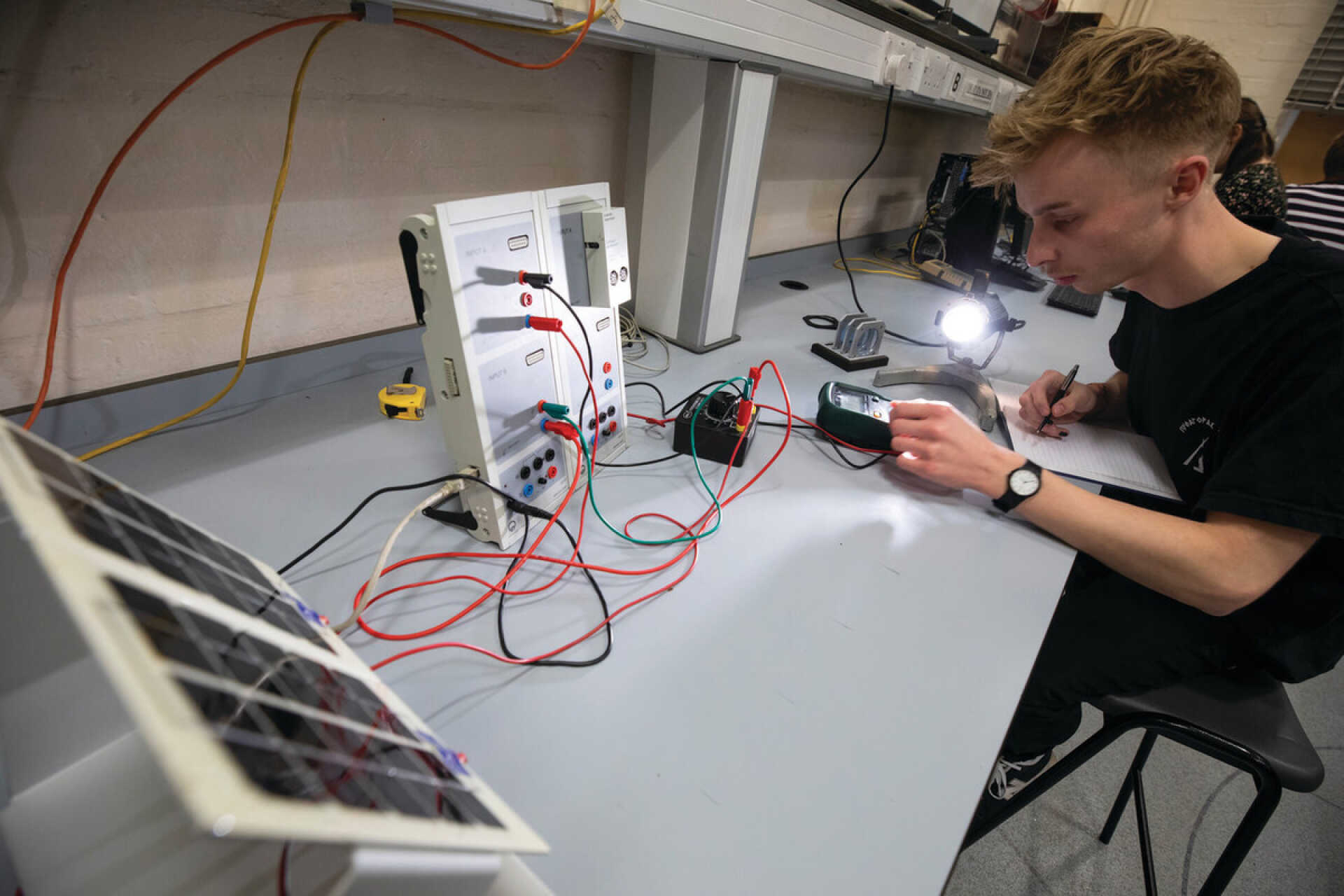
Your Physics degree opens the door to lots of exciting careers; taking a professional placement year helps you discover some of those options.
You'll be able to move between our courses in the earlier years, ensuring you are studying the best course for you.

Exploring all areas of physics was important to Lucy Abbott, which is why she chose to study at Kent – that and the friendly atmosphere.
You'll discover the latest developments in areas such as quantum materials and medical imaging from innovative teachers who are also active researchers.
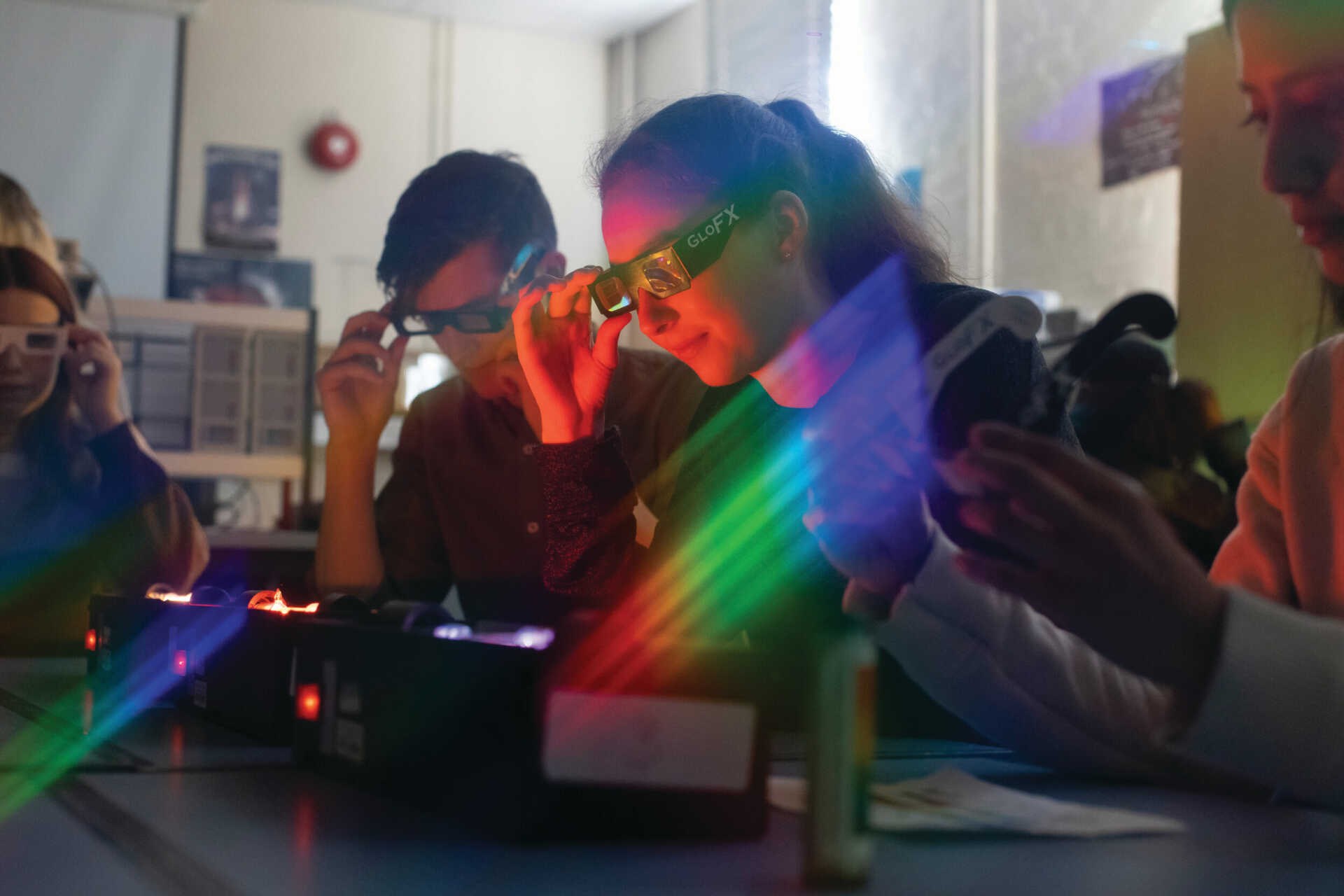
You'll use newly-refurbished physics and astronomy labs, a photonics centre and the Beacon Observatory with optical telescope.
Our typical offer levels are listed below and include indicative contextual offers. If you hold alternative qualifications just get in touch and we'll be glad to discuss these with you.
BBB, including A level Mathematics at B (not Use of Mathematics)
The University will consider applicants holding/studying BTEC Extended National Diploma Qualifications (QCF; NQF;OCR) in a relevant Science or Engineering subject at 180 credits or more, on a case by case basis. Please contact us via the enquiries tab for further advice on your individual circumstances.
30 points overall or 14 at HL including HL Maths/Maths Method or HL Mathematics: Analysis and Approaches at 5 or SL Maths/Maths Methods at 6 (not Maths Studies/SL Maths: Applications & Interpretations).
N/A
The University will consider applicants holding T level qualifications in subjects closely aligned to the course.
The University welcomes applications from Access to Higher Education Diploma candidates for consideration. A typical offer may require you to obtain a proportion of Level 3 credits in relevant subjects at merit grade or above.
Please contact our Admissions Team for more information at studynats@kent.ac.uk.
The following modules are offered to our current students. This listing is based on the current curriculum and may change year to year in response to new curriculum developments and innovation:
You’ll focus on the foundations of physics and develop your mathematical, experimental and programming skills.
This module provides an introduction to astronomy, beginning with our own solar system and extending to objects at the limits of the universe. Straightforward mathematics is used to develop a geometrical optics model for imaging with lenses and mirrors, and this is then used to explore the principles of astronomical telescopes.
This module builds on prior knowledge of arithmetic, algebra, and trigonometry. It will cover key areas of mathematics which are widely used throughout undergraduate university physics. In the first part it will look at functions, series, derivatives and integrals. In the second part it will look at vectors, matrices and complex numbers.
This module builds on the Mathematics I module to develop key mathematical techniques involving multiple independent variables. These include the topics of differential equations, multivariate calculus, non-Cartesian coordinates, and vector calculus that are needed for Physics modules in Stages 2 and 3.
In this module the mathematics of vectors and calculus are used to describe motion, the effects of forces in accordance with Newton's laws, and the relation to momentum and energy. This description is extended to rotational motion, and the force of gravity. In addition, the modern topic of special relativity is introduced.
This module examines key physical phenomena of waves and fields which extend over time and space. The first part presents a mathematical description of oscillations and develops this to a description of wave phenomena. The second part is an introduction to electromagnetism which includes electric and magnetic fields before providing an introduction to the topic of electrical circuits.
This module develops the principles of mechanics to describe mechanical properties of liquids and solids. It also introduces the principles of thermodynamics and uses them to describe properties of gases. The module also introduces the modern description of atoms and molecules based on quantum mechanics.
This module guides students through a series of experiments giving them experience in using laboratory apparatus and equipment. Students will also learn how to accurately record and analyse data in laboratory notebooks and write scientific laboratory reports. The experiments cover subjects found in the Physics degree program and are run parallel with Computing Skills workshops in which students are introduced to the concept of using programming/scripting languages to analyse and report data from their experiments.
One-on-one meetings and small group tutorials focused on academic progression and the development of key skills to support the core curriculum and future study or employment. Students meet with their Academic Advisor individually or in small groups at intervals during the academic year. Individual meetings review academic progress, support career planning etc. Themed tutorials develop transferable skills; indicative topics are essay and report writing, presentation skills, sourcing information, critical analysis etc. The tutorials are informal involving student activity and discussion. Year group events deliver general information e.g. on University resources, 4-year programmes, module selection etc.
You’ll deepen your understanding of modern physics, carry out in-depth laboratory experiments and group projects, with the opportunity to work on problems suggested by our industrial, scientific and medical partners.
One-on-one meetings and small group tutorials focused on academic progression and the development of key skills to support the core curriculum and future study or employment. Students meet with their Academic Advisor individually or in small groups at intervals during the academic year. Individual meetings review academic progress, support career planning etc. Themed tutorials develop transferable skills; indicative topics are essay and report writing, presentation skills, sourcing information, critical analysis etc. The tutorials are informal involving student activity and discussion. Year group events deliver general information e.g. on University resources, 4-year programmes, module selection etc.
This module provides an introduction to quantum mechanics, developing knowledge of wave-functions, the Schrodinger equation, solutions and quantum numbers for important physical properties. Topics include: 2-state systems. Bras and kets. Eigenstates and Eigenvalues; Superposition Principle; Probability Amplitudes; Change of Basis; Operators. The Schrodinger equation. Stationary states. Completeness. Expectation values. Collapse of the wave function. Probability density. Solutions of the Schrodinger equation for simple physical systems with constant potentials: Free particles. Particles in a box. Classically allowed and forbidden regions. Reflection and transmission of particles incident onto a potential barrier. Probability flux. Tunnelling of particles. The simple harmonic oscillator. Atomic vibrations.
This module will build on the general principles of quantum mechanics introduced earlier in the degree and applied them to the description of atoms, starting by the description of the hydrogen atom and covering other topics such as the effect of magnetic fields on an atom or X-ray spectra.
This module looks to introduce a range of important laws and principles relating to the physics of electromagnetism and optics. Students will also learn mathematical techniques to enable the modelling of physical behaviour and apply important theory to a range of electromagnetism and optics scenarios.
In this module students develop their experience of the practical nature of physics, including developing their ability to execute an experiment, and to use programming scripts to process data. Students also develop their skill in analysis of uncertainties, and comparison with theory. The module strengthens students' communication skills and knowledge of, and ability to write, all components of laboratory reports.
This module gives students experience of group work in the context of a physics investigation in an unfamiliar area. The module includes workshops for advice about successful group project work, and culminates in each group producing a report and presentation.
This module introduces and develops a knowledge of numerical approximations to solve problems in physics, building on the programming skills gained in earlier stages. In addition, it complements the analytical methods students are trained to use and extends the range of tools that they can use in later stages of the degree. This module covers for example how to solve linear equations, how to find eigenvalues and numerical integration and differentiation.
The module will provide a firm grounding in mathematical methods: both for solving differential equations and, through the study of special functions and asymptotic analysis, to determine the properties of solutions.
This module builds on the brief introduction to astronomy previously taught in earlier stages. Students enhance their knowledge of astrophysics through the study of the theory, formalism and fundamental principles developing a rigorous grounding in observational, computational and theoretical aspects of astrophysics. In particular they study topics such as properties of galaxies and stars and the detection of planets outside the solar system.
This module aims to provide a basic understanding of the major subsystems of a spacecraft system and the frameworks for understanding spacecraft trajectory and orbits, including interplanetary orbits, launch phase and altitude control. Students will also gain an awareness of ideas on how space is a business/commercial opportunity and some of the management tools required in business.
The professional placement year takes place in your third year. To undertake the placement year, you must complete your first year at the first attempt with an average pass mark of at least 60%. We have a dedicated team who will offer you help and support in finding a placement, but ultimately it is your responsibility. If you are unable to secure a placement, you will revert to the equivalent three-year degree course.
Students spend a year (minimum 9 months) working in an industrial or commercial setting, applying and enhancing the skills and techniques they have developed and studied in the earlier stages of their degree programme. The work they do is entirely under the direction of their industrial supervisor, but support is provided via a dedicated Placement Support Officer within the School. This support includes ensuring that the work they are being expected to do is such that they can meet the learning outcomes of the module.
Students spend a year (minimum 9 months) working in an industrial or commercial setting, applying and enhancing the skills and techniques they have developed and studied in the earlier stages of their degree programme.
The report required for this module should provide evidence of the subject specific and generic learning outcomes, and of reflection by the student on them as an independent learner.
You’ll take more advanced and specialised modules and conduct open-ended laboratory investigations.
One-on-one meetings and small group tutorials focused on academic progression and the development of key skills to support the core curriculum and future study or employment. Students meet with their Academic Advisor individually or in small groups at intervals during the academic year. Individual meetings review academic progress, support career planning etc. Themed tutorials develop transferable skills; indicative topics are essay and report writing, presentation skills, sourcing information, critical analysis etc. The tutorials are informal involving student activity and discussion. Year group events deliver general information e.g. on University resources, 4-year programmes, module selection etc.
After taking the classes students should be more fluent and adept at solving and discussing general problems in Physics (and its related disciplines of mathematics and engineering).
There is no formal curriculum for this course, which uses and demands only physical and mathematical concepts with which the students at this level are already familiar.
Problems are presented and solutions discussed in topics spanning several topics in the undergraduate physics curriculum (Mechanics and statics, thermodynamics, and optics, etc).
Problems are also discussed that primarily involve the application of formal logic and reasoning, simple probability, statistics, estimation and linear mathematics.
Special Relativity: Limits of Newtonian Mechanics, Inertial frames of reference, the Galilean and Lorentz transformations, time dilation and length contraction, invariant quantities under Lorentz transformation, energy momentum 4-vector.
Maxwell's equations: operators of vector calculus, Gauss law of electrostatics and magnetostatics, Faraday's law and Ampere's law, physical meanings and integral and differential forms, dielectrics, the wave equation and solutions, Poynting vector, the Fresnel relations, transmission and reflection at dielectric boundaries.
Modern Optics: Resonant cavities and the laser, optical modes, Polarisation and Jones vector formulation.
Thermodynamics
Review of zeroth, first, second laws. Quasistatic processes. Functions of state. Extensive and intensive properties. Exact and inexact differentials. Concept of entropy. Heat capacities. Thermodynamic potentials: internal energy, enthalpy, Helmholtz and Gibbs functions. The Maxwell relations. Concept of chemical potential. Applications to simple systems. Joule free expansion. Joule-Kelvin effect. Equilibrium conditions. Phase equilibria, Clausius-Clapeyron equation. The third law of thermodynamics and its consequences – inaccessibility of the absolute zero.
Statistical Concepts and Statistical Basis of Thermodynamics
Basic statistical concepts. Microscopic and macroscopic descriptions of thermodynamic systems. Statistical basis of Thermodynamics. Boltzmann entropy formula. Temperature and pressure. Statistical properties of molecules in a gas. Basic concepts of probability and probability distributions. Counting the number of ways to place objects in boxes. Distinguishable and indistinguishable objects. Stirling approximation(s). Schottkly defect, Spin 1/2 systems. System of harmonic oscillators. Gibbsian Ensembles. Canonical Ensemble. Gibbs entropy formula. Boltzmann distribution. Partition function. Semi-classical approach. Partition function of a single particle. Partition function of N non-interacting particles. Helmholtz free energy. Pauli paramagnetism. Semi Classical Perfect Gas. Equation of state. Entropy of a monatomic gas, Sackur-Tetrode equation. Density of states. Maxwell velocity distribution. Equipartition of Energy. Heat capacities. Grand Canonical Ensemble.
Quantum Statistics
Classical and Quantum Counting of Microstates. Average occupation numbers: Fermi Dirac and Bose Einstein statistics. The Classical Limit. Black Body radiation and perfect photon gas. Planck's law. Einstein theory of solids. Debye theory of solids.
To provide an introduction to solid state physics. To provide foundations for the further study of materials and condensed matter, and details of solid state electronic and opto-electronic devices.
Structure:
Interaction potential for atoms and ions. Definitions, crystal types. Miller indices. Reciprocal lattice. Diffraction methods.
Dynamics of Vibrations.
Lattice dynamics, phonon dispersion curves, experimental techniques.
Electrons in k-space: metals.
Free electron theory of metals. Density of states. Fermi-Dirac distribution. Band theory of solids - Bloch's theorem. Distinction between metals and insulators. Electrical conductivity according to classical and quantum theory. Hall effect.
Semiconductors.
Band structure of ideal semiconductor. Density of states and electronic/hole densities in conduction/valence band. Intrinsic carrier density. Doped semiconductors.
Magnetism.
Definitions of dia, para, ferromagnetism. Magnetic moments. General treatment of paramagnetism, Curie's law. Introduction to ferromagnetism.
Aims:
To provide experience in laboratory based experimentation, data recording and analysis and drawing of conclusions.
To develop report writing skills for scientific material.
To develop the ability to undertake investigations where, as part of the exercise, the goals and methods have to be defined by the investigator.
To develop skills in literature searches and reviews.
The module has two parts: Laboratory experiments and a mini-project. For half the term the students will work in pairs on a series of 3 two-week experiments. A report will be written by each student for each experiment.
Experiments include:
Solar cells.
NMR.
Hall effect.
Gamma ray spectroscopy.
X-ray diffraction.
Optical spectroscopy.
Mini-projects. For half the term, the students will work in pairs on a mini-project. These will be more open-ended tasks than the experiments, with only brief introductions stating the topic to be investigated with an emphasis on independent learning. A report will be written by each student on their project.
This module will introduce students to basic concepts in nuclear and particle physics, and will provide an understanding of how the principles of quantum mechanics are used to describe matter at sub-atomic length scales. The following concepts will be covered:
* Properties of nuclei: Rutherford scattering. Size, mass and binding energy, stability, spin and parity.
* Nuclear Forces: properties of the deuteron, magnetic dipole moment, spin-dependent forces.
* Nuclear Models: Semi-empirical mass formula M(A, Z), stability, binding energy B(A, Z)/A. Shell model, magic numbers, spin-orbit interaction, shell closure effects.
* Alpha and Beta decay: Energetics and stability, the positron, neutrino and anti-neutrino.
* Nuclear Reactions: Q-value. Fission and fusion reactions, chain reactions and nuclear reactors, nuclear weapons, solar energy and the helium cycle.
* Experimental methods in Nuclear and Particle Physics (Accelerators, detectors, analysis methods, case studies will be given).
* Discovery of elementary particles and the standard model of particles
* Leptons, quarks and vector bosons
* The concept of four different forces and fields in classical and quantum physics; mediation of forces via virtual particles, Feynman Diagrams
* Relativistic Kinematics
* Relativistic Quantum Mechanics and Prediction of Antiparticles
* Symmetries and Conservation Laws
* Hadron flavours, isospin, strangeness and the quark model
* Weak Interactions, W and Z bosons
In this module you learn what is meant by neural networks and how to explain the mathematical equations that underlie them. You also familiarise yourself with cognitive neural networks using state of the art simulation technology and apply these networks to the solution of problems. In addition, the module discusses examples of computation applied to neurobiology and cognitive psychology. The module also introduces artificial neural networks from the machine learning perspective. You will study the existing machine learning implementations of neural networks, and you will also engage in implementation of algorithms and procedures relevant to neural networks.
Teaching is by lectures, practical classes, tutorials and workshops. You have an average of nine one-hour lectures, one or two days of practical or project work and a number of workshops each week. The practical modules include specific study skills in Physics and general communication skills.
Assessment is by written examinations at the end of each year and by continuous assessment of practical classes and other written assignments. Your final degree result is made up of a combined mark from the Stage 2 and 3 assessments with maximum weight applied to the final stage.
Please note that there are degree thresholds at stage 1 that you will be required to pass in order to continue onto the next stages.
For a student studying full time, each academic year of the programme will comprise 1200 learning hours which include both direct contact hours and private study hours. The precise breakdown of hours will be subject dependent and will vary according to modules. Please refer to the individual module details under Course Structure.
Methods of assessment will vary according to subject specialism and individual modules. Please refer to the individual module details under Course Structure.
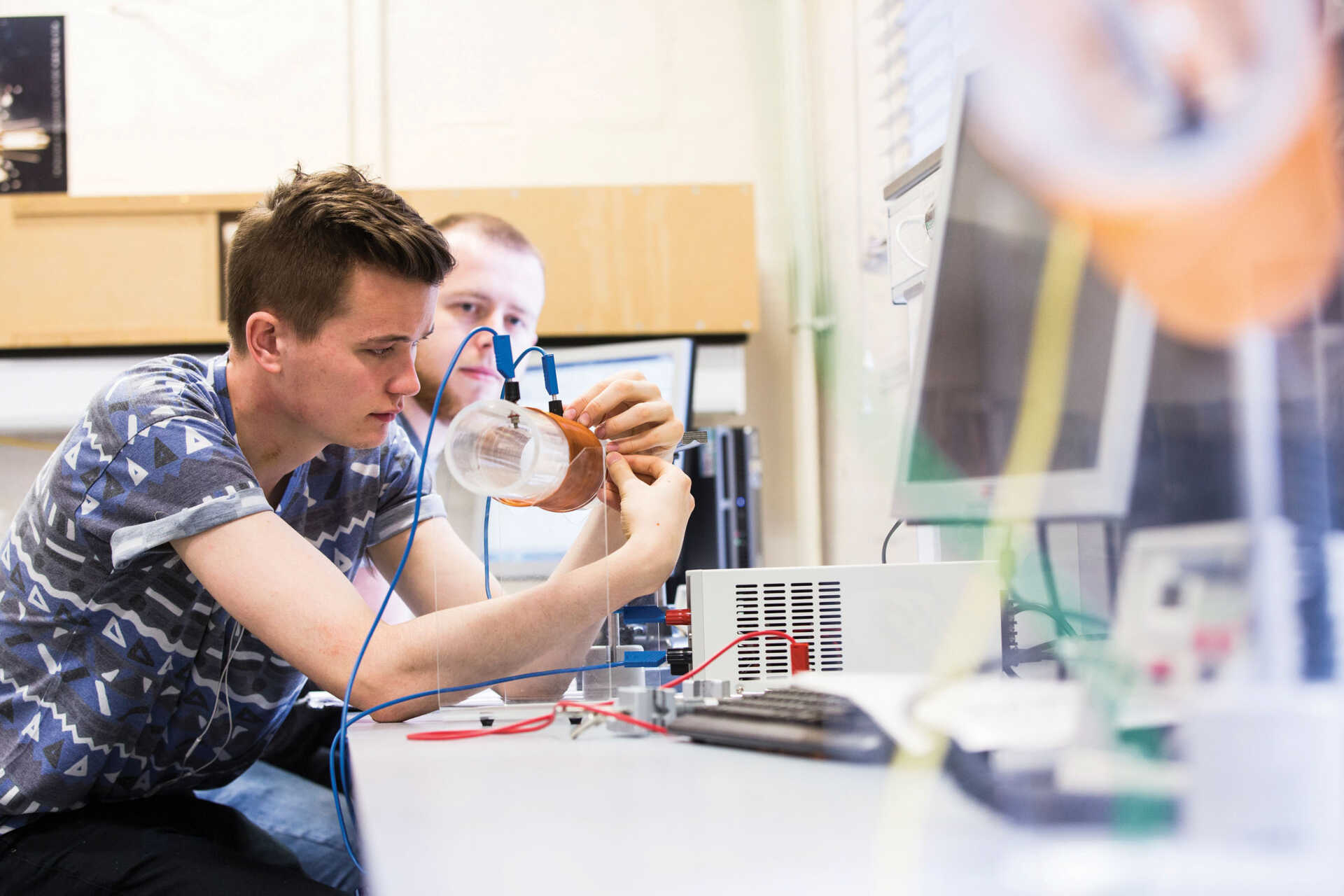
You’ll graduate with an excellent grounding in scientific knowledge and extensive laboratory experience, as well as a toolbox of transferable skills highly sought after by employers. These include excellent communication and problem-solving skills; analytical thinking; effective time management; and the ability to work independently or as part of a team. Typical graduate destinations include:
Read some of their stories, and find out about the range of support and extra opportunities available to further your career potential.
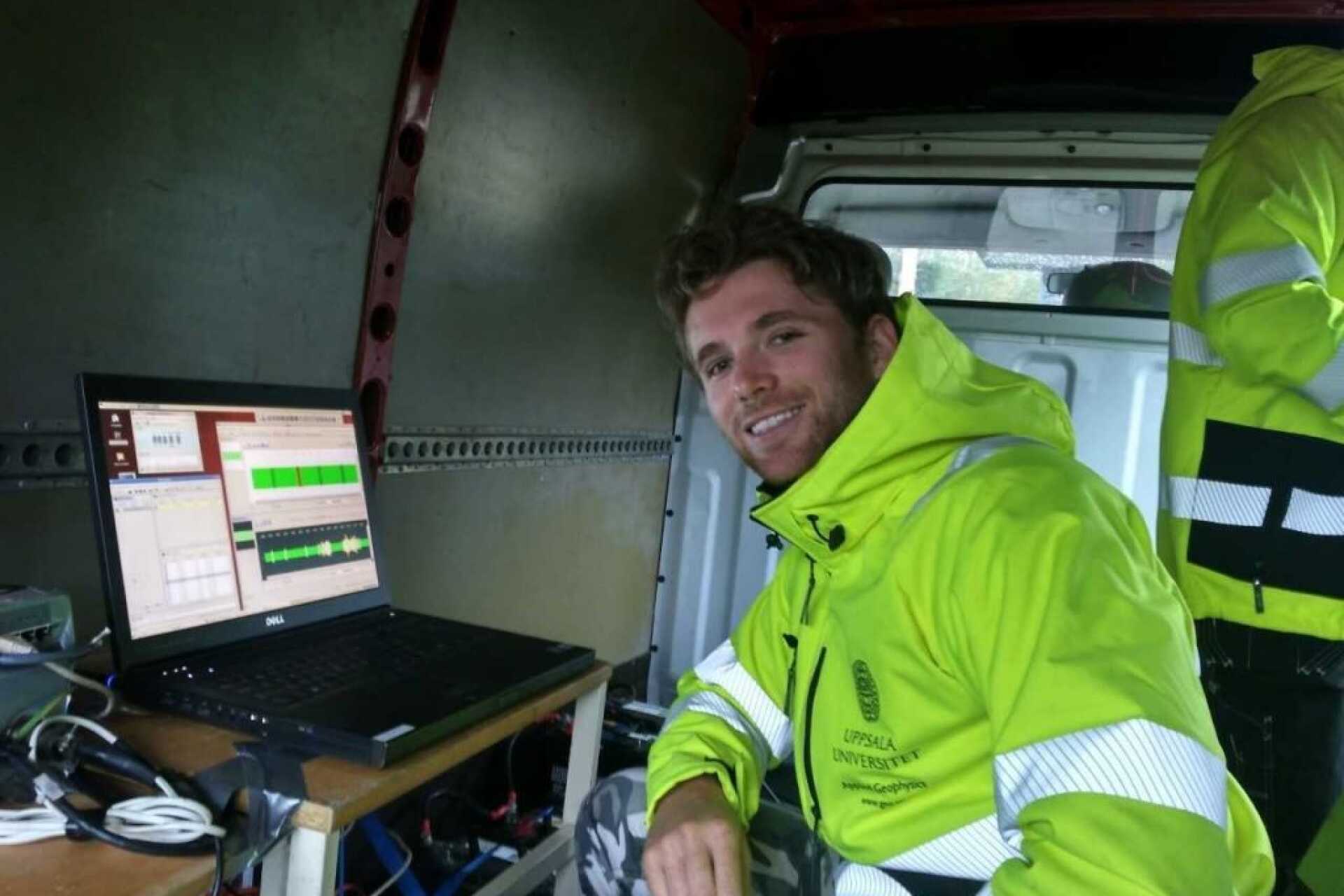
The 2023/24 annual tuition fees for this course are:
For details of when and how to pay fees and charges, please see our Student Finance Guide.
For students continuing on this programme, fees will increase year on year by no more than RPI + 3% in each academic year of study except where regulated.*
The University will assess your fee status as part of the application process. If you are uncertain about your fee status you may wish to seek advice from UKCISA before applying.
Fees for undergraduate students are £1,385.
Fees for undergraduate students are £1,385.
Students studying abroad for less than one academic year will pay full fees according to their fee status.
Find out more about accommodation and living costs, plus general additional costs that you may pay when studying at Kent.
Kent offers generous financial support schemes to assist eligible undergraduate students during their studies. See our funding page for more details.
At Kent we recognise, encourage and reward excellence. We have created the Kent Scholarship for Academic Excellence.
The scholarship will be awarded to any applicant who achieves a minimum of A*AA over three A levels, or the equivalent qualifications (including BTEC and IB) as specified on our scholarships pages.

We have a range of subject-specific awards and scholarships for academic, sporting and musical achievement.
Join the student-led Physics Society and Space Soc. They organise talks, practical demonstrations and social events. A great way to meet students across year groups.
We welcome applications from students all around the world with a wide range of international qualifications.

Student life

Kent ranked top 50 in The Complete University Guide 2023 and The Times Good University Guide 2023.
Kent Sport
Kent has risen 11 places in THE’s REF 2021 ranking, confirming us as a leading research university.
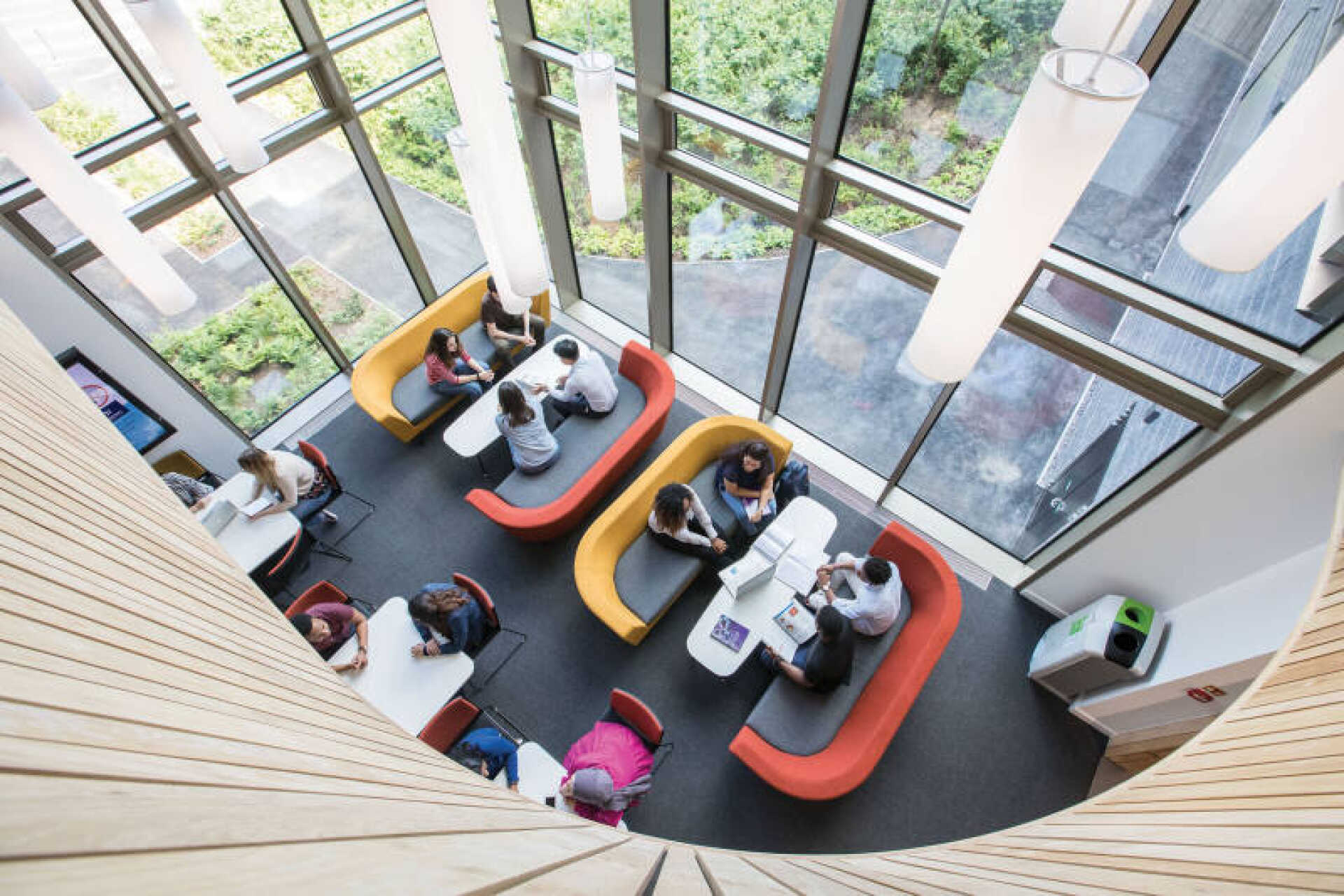
Accommodation